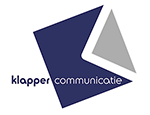Lately, there is an increasing debate about the future of linear television. But is there a growing number of viewers choosing to exchange old fashioned linear television for VOD services as Netflix and YouTube as often claimed? And is linear TV perceived as old-fashioned by millennials?
Nielsen research (2016) revealed that only 11% of the viewers in Europe pay for broadcasts or VOD services. And in countries like The Netherlands and The United Kingdom paid VOD services are only used at an average of 15 minutes a day. Still the Dutch viewers watch at an average of 183 minutes (2016) linear TV per day. The British even watch more TV: at an average of 240 minutes per day. So the share of paid VOD viewing compared to linear TV viewing is limited. Television is still a mass medium.
That’s why vloggers go multiscreen. The Dutch online Katwalk format – about fashion, beauty and entertainment – was first distributed on Dutch RTL Multi Channel Network in 2016 and later on was launched at one of RTL’s commercial TV channels (RTL5). But not only local players are attracted to linear TV distribution. Also international players like to distribute their video content via linear TV. This year (2017) Facebook announced to distribute video content in an app at cable’s set top boxes, and video platform Vice already offers linear programming at the American and Dutch cable systems.
However, also a reverse trend is observable. A growing number of traditional TV channels are distributing their content through online platforms. Earlier this year CBS announced to offer television subscriptions in co-operation with Google. Comparable deals are planned with the FOX sports FX and National Geographic Channel. Also YouTube announced the launch of YouTube Unplugged, a service which will distribute several traditional American networks like CBS, ABC and ESPN. This could also be a new opportunity for Dutch networks to appeal to a younger audience. But the networks have chosen to distribute their channels through their own catch-up online platforms.
The online distribution of the Dutch channels through international platforms could interest millennials in linear viewing. Certainly, because many new online TV channels are distributing premium (linear) content. A video platform as Crackle offers high quality programmes as Comedian in cars getting coffee and action series like Cleaners (about a professional trained team of hit men). AOL originals even created a talk show format – Parkbench – in which Steve Buscemi follows various famous friends in New York. The show won (2016) an Emmy award for best short-form variety series on Sunday.
It is striking that even online channels exist, which are linear watched. Channels like Twitch (gaming) and the channel Spongebob are examples of this.
It has been a recurring theme among media experts that millennials have rejected linear TV. Probably this is due to the old-fashioned image of the traditional way of viewing (terrestrial and cable TV) and especially when one takes into account the rise of all types of linear online channels. So, European broadcasters in general and Dutch broadcasters in particular should think about distributing their linear channels through YouTube. Distributing channels through YouTube could imply that millennials massively will watch ‘linear TV’, but only online.
Charles Vaneker
Senior Research and Media consultant
